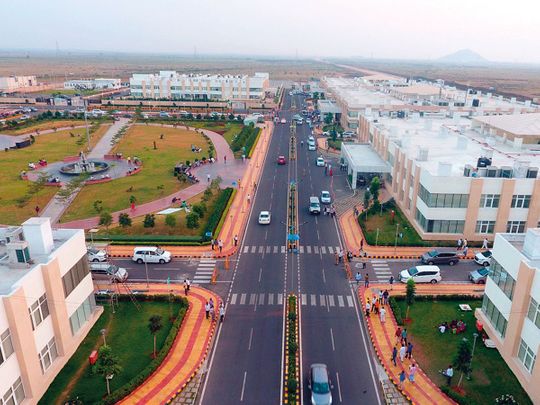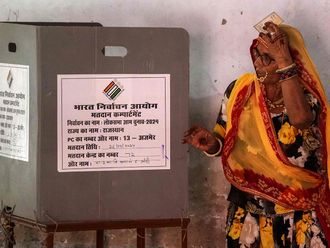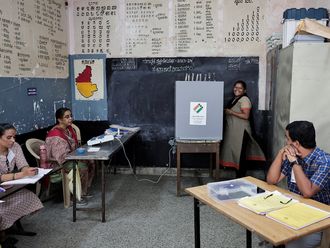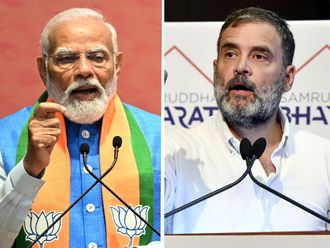
Hyderabad: The recent talk of moving the Andhra Pradesh capital from Amaravati has set tongues wagging.
Some have drawn parallels to Mohammad Bin Tughlaq, who ruled India in the 14th century, moving the national capital from Delhi to Daulatabad (present day Aurangabad in Maharashtra).
As the talk of such a move has gained momentum, opposition leaders in the state have advised Andhra Pradesh Chief Minister YS Jaganmohan Reddy not to commit the same folly as Tughlaq as the move had caused financial trouble and distress to the people.
The leader of the opposition N Chandrababu Naidu, who came up with the idea of building Amaravati as a new capital, has called the YSR Congress government’s plans to move the capital elsewhere a conspiracy. Meanwhile, a TDP MP has termed it a Tughlaq-like decision.
Kesineni Srinivas alias Nani, MP from Vijayawada, has warned that the moving of the capital from Amaravati will spell disaster and would cause a lot of hardship to the people. “I pray that you will ensure that your name does not get into history like Tughlaq,” he said.
A question mark appeared on the fate of Amaravati the day YS Jaganmohan Reddy succeeded N Chandrababu Naidu as the state’s Chief Minister. Over the past three months, a dark cloud of uncertainty hung over the $8 billion (Dh29.3 billion) project as all the construction activities in the capital region came to a grinding halt.
From politics and personal prejudices to the land business and profits, many factors seem to be at play, putting the entire plan in jeopardy.
The last few weeks have spelled doom with the state’s minister for urban development and municipal administration Botcha Satyanarayana publicly declaring that the state government was rethinking the entire Amaravati project as it falls in the flood-prone zone of river Krishna.
Why was Guntur chosen to build the new capital Amaravati?
While an expert committee led by Sivaramakrishnan had recommended Donakonda in Prakasham district to build the capital, then Chief Minister N Chandrababu Naidu chose the area between Guntur and Vijayawada on the bank of river Krishna to build the new capital and gave it the name of Amaravati, after an ancient Buddhist city of the same name that existed in the region.
Though there were strong objections from various quarters, including the expert committee, on the grounds that the land in Guntur was fertile and the area was prone to submergence in floods, Naidu pressed ahead and acquired 33,000 acres from farmers by offering an attractive deal.
“This is an ideal location for a world class capital city as it will be situated between two major cities of Guntur and Vijayawada and will be well connected to all parts of the state”, Naidu argued.
Prime Minister Narendra Modi laid the foundation stone for the new city on October 22, 2015. To realise his $8 billon dollar for a global city, Naidu took help from Singapore and Japan in its planning. He also managed to secure funding from the World Bank and Asian Infrastructure Investment Bank in addition to the commitment of Rs25 billion (Dh1.2 billion) funding from the Centre.
Why did Amaravati fall out of favour?
Even as Amaravati and the region around it was bustling with construction activities, and massive government and private buildings were springing up, the Chandrababu Naidu-led TDP lost power in the state in May. Given the strong antipathy his successor YS Jaganmohan Reddy had towards any idea and project of Naidu, serious doubts started being raised about the future of project Amaravati.
As Jagan’s party YSR Congress (YSRCP) had levelled serious allegations of corruption and irregularities in the capital city project, portents were ominous.
A major blow came when soon after Jagan taking charge, the World Bank announced that it was withdrawing $300 million of funding. Asia Infrastructure Investment Bank (AIIB) also followed suit and withdrew its promise of $200 million of funding.
With the new government re-considering many of the contracts awarded by the Chandrababu Naidu regime and stopping the payments to the contractors for the work already done, the construction activity in the proposed capital came to a halt.
The second setback was the flooding of certain parts of the capital by river Krishna following heavy rains, which also threatened the rented house of Chandrababu Naidu.
The Jagan government got into action to raise questions about the safety and suitability of the location of the capital.
State municipal administration minister Botcha Satyanarayana told the media that if the capital city was constructed in accordance with the plans of the last government it will put a huge extra burden on the state exchequer and lead to the wastage of public money
“To protect many areas from flooding, canals and dams will have to be built and it will cost huge amount of money and will double the cost of the capital”, he said.
The Jagan Reddy government argued that construction activity close to the river Krishna was in violation of environmental rules and regulations.
Even as it sparked protests from all quarters, T G Venkatesh, Member of Rajya Sabha who defected from TDP to BJP, claimed that Jagan had made up his mind to shift the capital from Amaravati and instead develop four capitals in different regions of the state.
“Jaganmohan Reddy has shared this plan with the BJP leadership,” said Venkatesh.
Several other BJP leaders including the Union Minister of state for Home G Kishan Reddy and Rajya Sabha member GVL Narasimha Rao also added their voices strengthening such a possibility.
What is the land transaction controversy?
The third major objection to the capital project was the allegation of several YSR Congress leaders that Naidu, his family and associates made billions by acquiring land in and around the proposed capital.
“We have evidence of insider transactions of lands,” claimed Botcha Satyanrayana, even naming BJP MP and former minister YS Chowdary. Satyanrayana alleged that Chowdary’s family owned 124 acres of land in Krishna district.
Chowdary, an industrialist turned politician, was in Telulgu Desam when the Amaravati project was launched but joined the BJP recently. Satyanrayana also alleged that a cousin of Chowdary, Jatin Kumar, had 110 acres and the MP’s niece had 14 acres of land in different parts of Krishna district. “This is just a sample. Insider trading is real and cases like these prove how they looted property,” the minister said.
Chowdary on the other hand said that he and his family had no land in 29 villages, which form the capital region in Guntur district. “We have ancestral land in Veerullapadu and other parts of Krishna district for over 100 years,” he said.
YSRCP leaders were also trying to target the other leaders of the TDP and the Naidu family with the same allegation of owning lands in the capital region.
Satyanrayana also claimed that the brother-in-law of an actor-turned-politician had purchased 493 acres of land in Krishna district. The Jagan government says that it has evidence of insider trading and will take action on that basis. He was referring to actor N Balakrishna, who is also the brother-in-law of Chandrababu Naidu.
Why are farmers worried?
The increasing uncertainty over Amaravati has created a panic among stakeholders, including those who bought land and property in the area at exorbitant rates. Equally hurt were the farmers who had surrendered their verdant lands in exchange for attractive package. While YSR Congress leaders alleged that these farmers were forced to give up their lands, the farmers came out on the streets to protest against the possibility of the capital city getting scrapped. In view of their increasing protests, the Jagan government has now released Rs1.8 billion for the payment of annual lease to the farmers.
What are the options before Jaganmohan Reddy?
From the claims of several BJP leaders that Jagan had already informed the Central government about his plans, it looks certain that Amaravati’s fate has been sealed. But except for Satyanarayana declaring that the state government will soon come out with a statement, no clear announcement has been made. The silence fuelled fresh speculation and rumours every day. While the politicians from Rayalaseema region were demanding that the capital should be located either in Kadapa, Jagan’s home district, or Kurnool, which had served as capital of Andhra Pradesh briefly in early 1950s. If one believes BJP leaders, Jagan may go for four, not one, capitals in different regions of the state to satisfy local aspirations.
What are the other places under consideration?
Donakonda in Prakasham district is among the possible alternatives being suggested for developing a new capital. It was one of the sites discussed initially leading to a boom in the land price in the region.
The area around Donakonda village, famous for its British era air strip, was bustling with activity in 2014 when speculations were rife that this could be the location for a new capital. However, when Naidu finalised the area around Thullur of Guntur district to build Amaravati city the land prices crashed to half in Donakonda.
Now, with the growing uncertainty about Amaravati, Donakonda was again buzzing with the interested buyers making rounds of the place to accumulate as much land as possible as a future investment.
While the going price at the peak in 2014 was Rs1 million per acre and it had slumped to half a million, now it has again shot up and the highway facing plots were going for Rs2.5 million per acre.
Naidu had planned to complete the capital city project by 2024 but now the officials say it may take another ten years for its completion.
But now it appears to be a distant dream lost in the haze of uncertainty.












